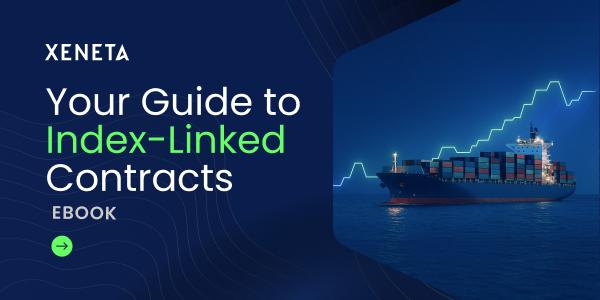Less than seven weeks remain to agree a new pay deal and avert union strike action at US East and Gulf Coast ports – meaning time is now up for shippers to take decisive action to protect supply chains.
The current pay deal with the International Longshoremen’s Association (ILA) expires on 30 September, with strike action expected to take place immediately if a new agreement cannot be reached.
With a port-to-port sailing time of 24 days on a typical Transatlantic trade from Genoa to Savannah, plus around 10 days land operations at either end, shippers must act now if they wish to utilize alternative supply chain options.
If European exporters carry on regardless and continue loading containers onto ships scheduled to arrive at the US East and Gulf Coast after 30 September, they will be at the mercy of union negotiations and the possibility of their cargo becoming snarled in severe port congestion.
The window of opportunity has already passed for shippers on the major fronthaul trades from the Far East to US East and Gulf coasts. With port-to-port sailing times of 50 days between Shanghai and New York, plus land operations, there are already containers on the ocean which will arrive on the US East Coast after 30 September – deal or no deal.
What are the options?
In truth, very few options are left on the table because the best solution may have already been and gone.
Container volumes from South East Asia to North America hit an all-time high in June at 500 000 TEU (source: Container Trades Statistics), signalling the early arrival of the traditional peak season. Accumulated volumes for the first half of 2024 are up 23% compared to H1 last year.
No doubt this was largely driven by ongoing concerns over the impact of conflict in the Red Sea and a potential capacity crunch later in the year. But shippers will have also factored in the threat of strike action on the US East and Gulf Coast.
Therefore, it seems shippers’ preferred option to protect supply chains in 2024 has been to build up inventories by importing goods as quickly as possible. Should the worst happen, at least they have built a buffer into their supply chain.
If shippers are looking for alternatives right now, they could look towards importing into Montreal, but there are additional complexities involved. Halifax is an option but this port could not cope with the level of volumes involved in US East Coast trades.
Mexico East Coast ports are a viable alternative, but re-aligning supply chains to this extent in such a short period of time is fraught with difficulty.
Protecting supply chains comes at a cost
The frontloading of imports to protect supply chains not only caused record-breaking volumes, it also saw a massive spike in the cost of transporting goods by ocean.
Xeneta data reveals average spot rates from the Far East to US East Coast increased by almost 140% between 30 April and 1 July, before softening in late July and August. Clearly this was a price shippers felt was worth paying if it avoided the kind of disruption they experienced during the pandemic.
It has been a slightly different scenario on the Transatlantic trade. Volumes have been up year-on-year in April, May and June, suggesting frontloading of goods by shippers. However, average spot rates have not followed suit and have been steadily softening since peaking in early February.


This is perhaps due to the Transatlantic trade not being directly impacted by diversions around Cape of Good Hope and the severe port congestion witnessed in the Far East and Mediterranean in recent months.
Either way, if there is strike action on the US East and Gulf Coasts, there is the potential for severe disruption and upward pressure on spot rates in the remainder of 2024. Given the importance of the trades into the US East Coast, this disruption could become toxic and spread across global ocean supply chains.
How will play out?
Many shippers will be betting on a diplomatic solution being reached to avoid strike action. However, this is a risky approach given the current rhetoric, with ILA President Harold Daggett stating last week that the union’s 45,000 members ‘are ready to hit the streets if demands are not met’.
Reports this week also suggest negotiations between the ILA and The United States Maritime Alliance (USMX) have reached ‘an impasse’.
If shippers are ultimately caught out by strike action and need to take a react approach to protect supply chains, then air freight may be an option. Again, this comes with difficulties.
Air freight is also seeing record-breaking levels of demand in 2024, particularly on corridors from China to the US and Europe due to the extraordinary volumes being shipped by e-commerce giants such as Shein and Temu.
Therefore, even if shippers can secure air cargo capacity at short notice, it will be for relatively small volumes compared to ocean container freight and come with a heavy price tag.
Shippers have been using data to monitor spot rates and capacity across their supply chains in the past few months – this has been critical, especially for those shippers who have been unable to transport containers on their existing long term contracts.
Data has allowed shippers to make the best decision at the right time. For those who frontloaded imports it has been a hugely challenging – and costly – few months, but perhaps they have managed to avoid even greater pain down the line.
%201.png)




.png?width=387&name=image%20(45).png)

